Enhancing Soft Skills for DevOps Engineers: Essential Non-Technical Skills to Thrive
Consulting and Client Management
Managing Up Down and Sideways
Effective stakeholder management means building strong relationships in every direction—upward, downward, lateral, and external. By applying these strategies, you’ll drive alignment, enhance collaboration, and accelerate both individual and organizational success.
| Management Direction | Focus | Key Benefit |
|---|---|---|
| Upward Management | Aligning with leadership’s vision | Increased influence & trust |
| Downward Management | Empowering and developing your team | Higher motivation & growth |
| Lateral Management | Collaborating with peers | Improved synergy & efficiency |
| External Management | Engaging clients and partners | Stronger reputation & opportunities |
Managing Upwards: Aligning with Leadership
Upward management is about proactively connecting your work to leadership priorities. Focus on:
- Delivering concise, regular status updates
- Clarifying and reinforcing organizational goals
- Anticipating challenges and offering solutions
- Demonstrating reliability through consistent delivery
- Signaling strategic alignment to earn autonomy
By mastering these practices, you’ll boost your visibility and expand your influence within the organization.
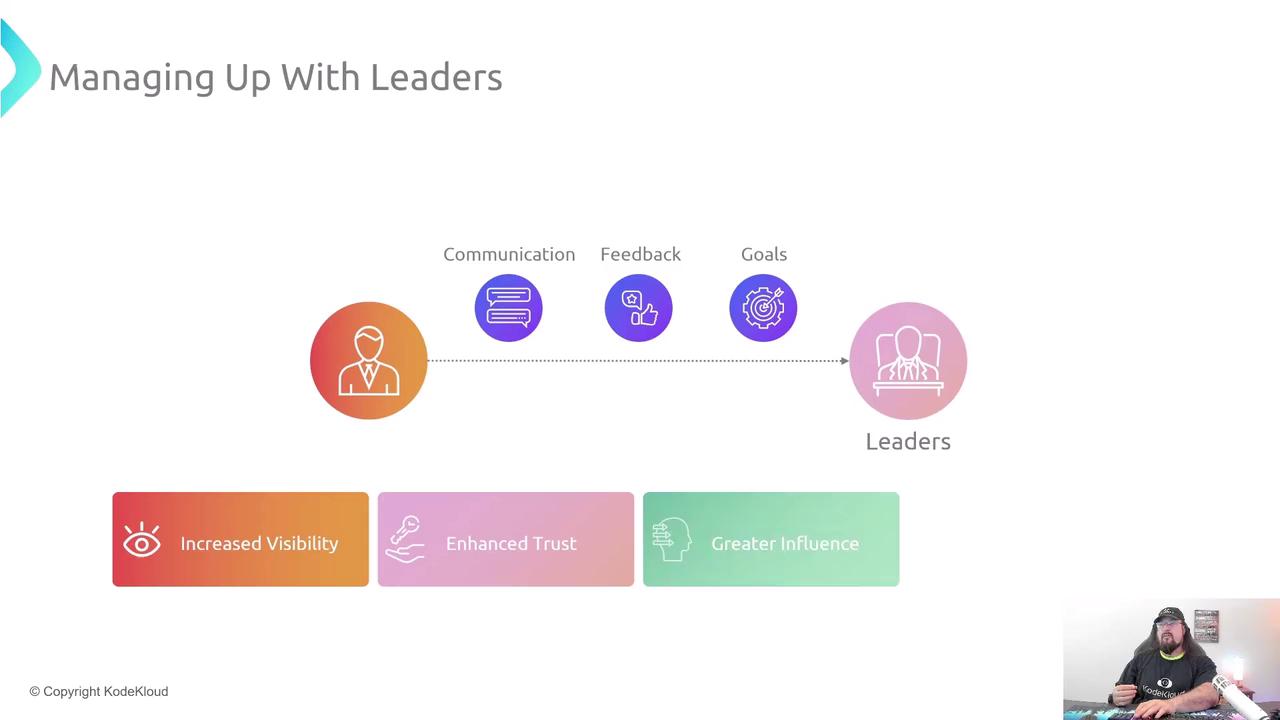
Managing Downwards: Empowering Your Team
Delegation is only the first step. True downward management nurtures growth and ownership by:
- Setting clear objectives and explaining the “why” behind them
- Delegating problems, not prescriptive solutions, to foster innovation
- Offering timely, specific feedback—both praise and constructive insights
- Recognizing progress and celebrating milestones as fiercely as final results
- Investing in skills development and supporting individual career goals
Warning
Avoid micromanagement: empower your team to make decisions and learn from mistakes.
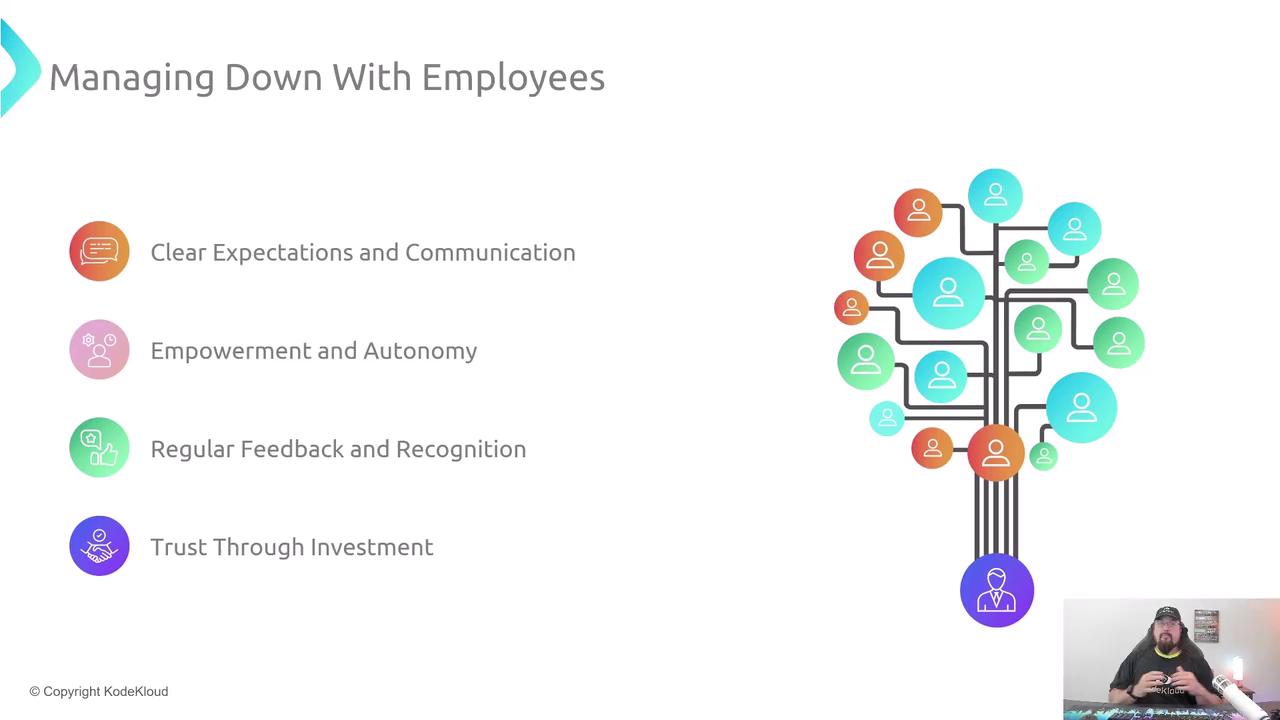
Managing Sideways: Fostering Peer Collaboration
Lateral management thrives on mutual respect, transparency, and shared goals. Key practices include:
- Keeping communication channels open for brainstorming and problem-solving
- Building joint ownership by recognizing interdependencies
- Leading with empathy—authentic connections drive collaboration
- Identifying common objectives and leveraging each other’s strengths
These habits create a network of support that accelerates innovation and efficiency.
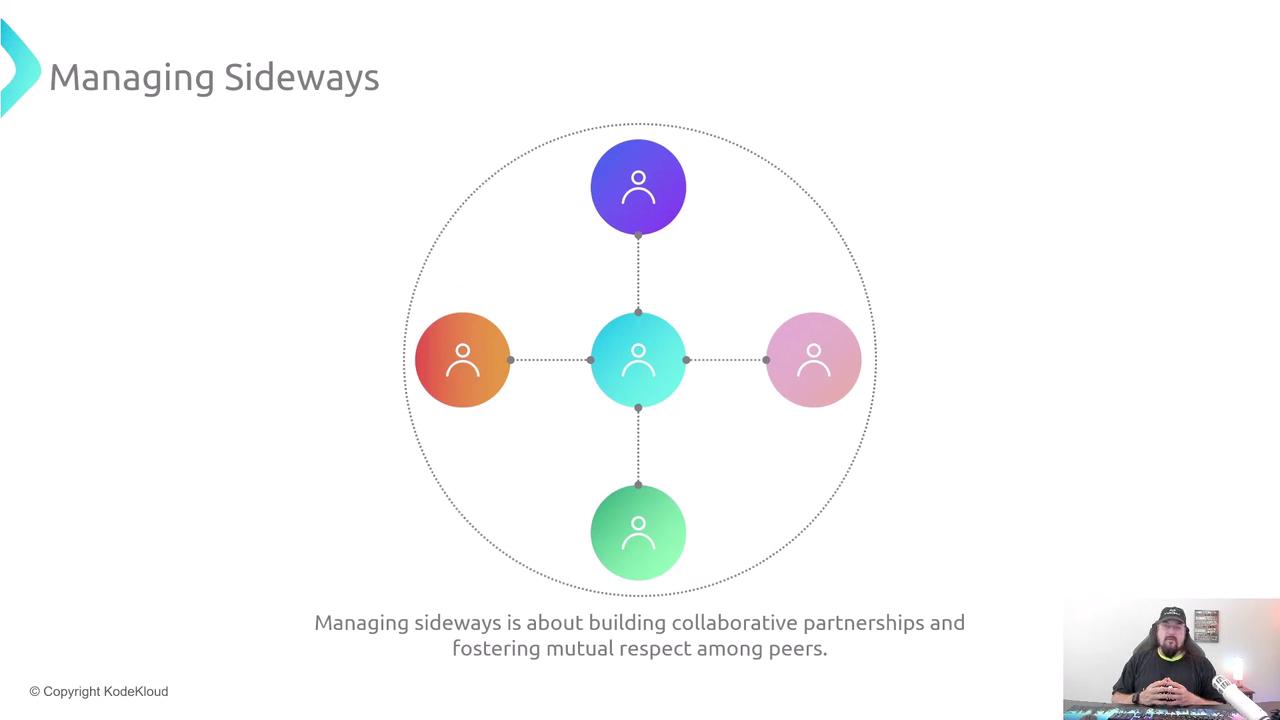
Managing External Stakeholders: Extending Your Reach
External management ensures solutions align with market demands and stakeholder priorities. Implement these tactics:
- Establishing transparent, scheduled check-ins with clients or partners
- Understanding their key success metrics and mirroring those in your deliverables
- Proactively raising and resolving concerns before they escalate
- Demonstrating consistent value to build long-term credibility
A strong external focus strengthens your brand, uncovers new opportunities, and fosters lasting relationships.
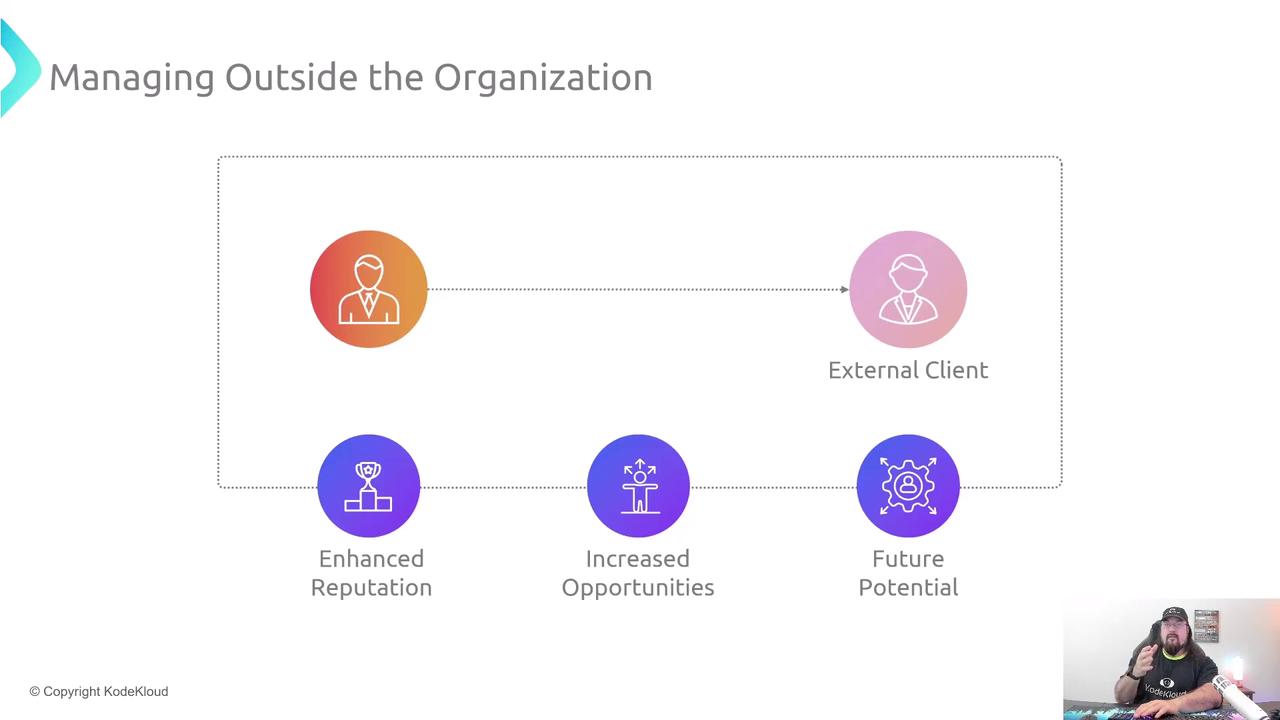
Advantages of a Holistic Stakeholder Management Approach
Embracing all four directions delivers powerful benefits:
| Benefit | Description |
|---|---|
| Cross-Functional Alignment | Synchronizes goals across teams, reducing silos |
| Enhanced Stakeholder Satisfaction | Builds trust internally and externally through consistent, value-driven interactions |
| Elevated Team Morale and Retention | Creates a supportive environment where people feel heard and valued |
| Accelerated Professional Development | Expands skills and visibility via diverse relationships |
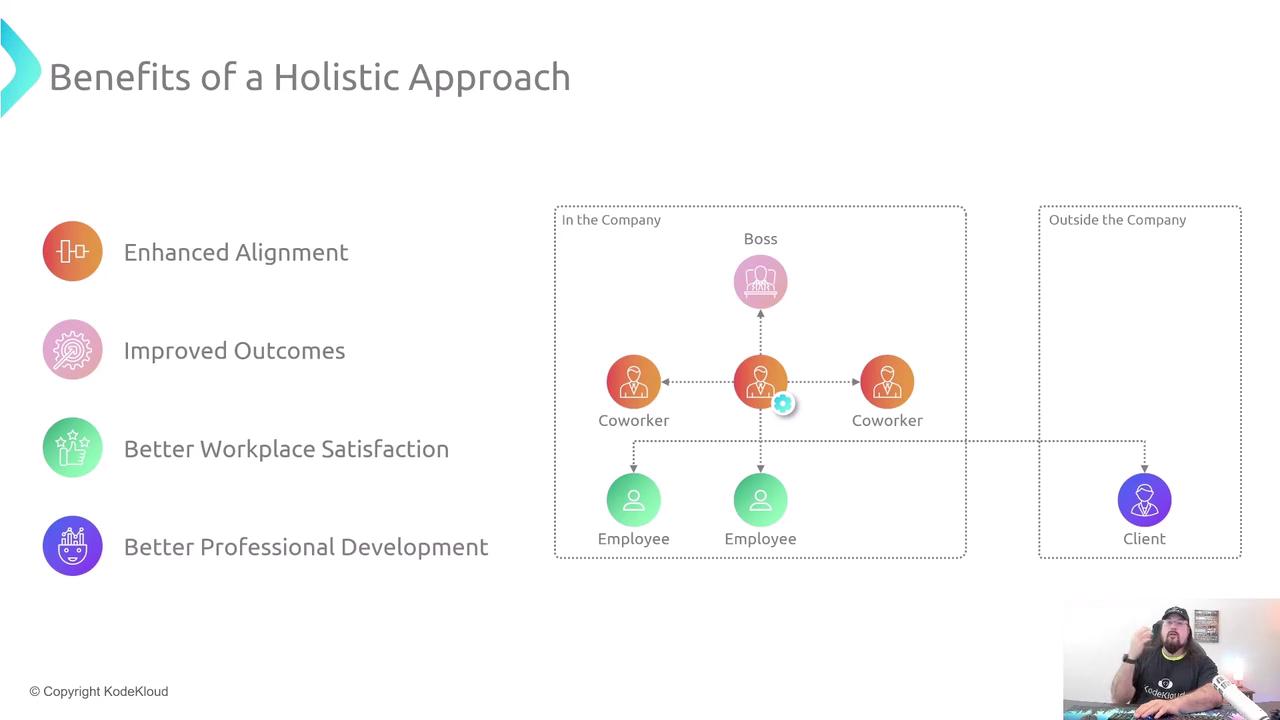
Key Takeaways
- Manage Up by aligning with leadership’s strategic vision
- Manage Down through empowerment and continuous feedback
- Manage Sideways via open collaboration and mutual respect
- Manage Outside by proactively engaging external stakeholders
Start by selecting one relationship—leader, team member, peer, or client—and apply these principles consistently. Effective multidirectional management drives clarity, prevents misalignment, and builds resilient teams.
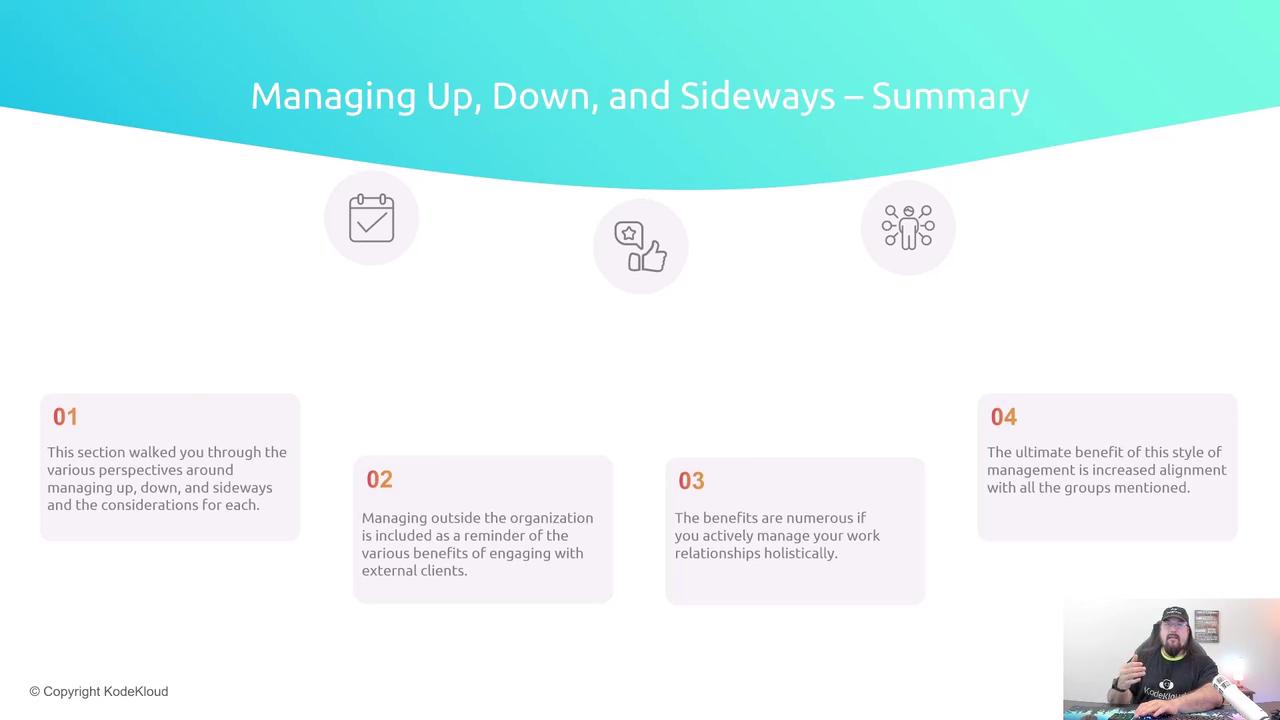
Further Reading
Watch Video
Watch video content